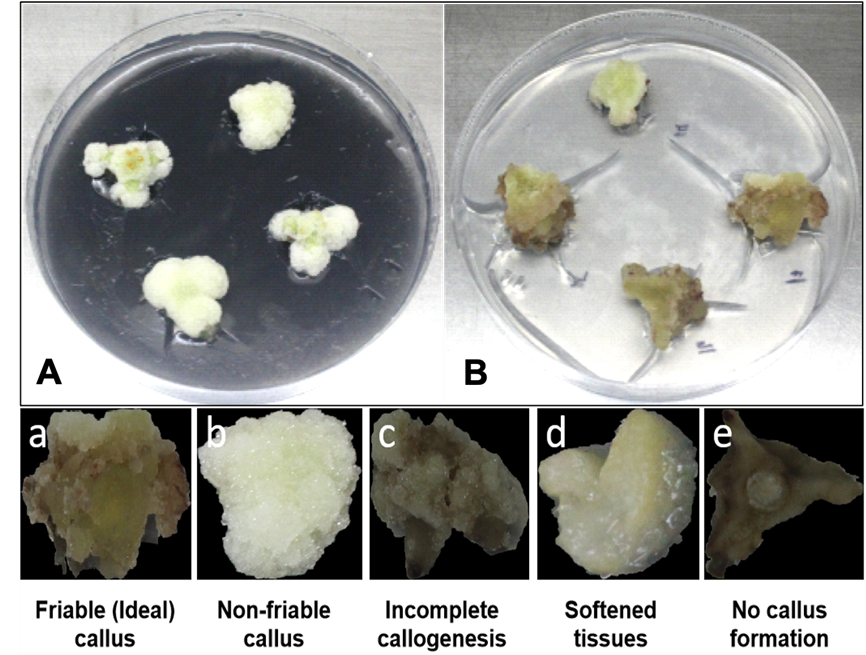Dragon fruit calli development and fungal contamination as influenced by activated charcoal
DOI:
https://doi.org/10.56890/jpacd.v23i.375Keywords:
Diaphorthe species, Hylocereus species, somatic embryogenesisAbstract
Activated charcoal is often used in plant tissue culture systems to reduce phenolic oxidation and improve cell growth and development. This study investigated activated charcoal's effect on the somatic embryogenesis of dragon fruit (Hylocereus species). Nine-month-old seed-derived dragon fruit stems wereplaced in basal Murashige and Skoog (MS) plates supplemented with 2, 4-D (1.5 mg/l) and activated charcoal (1g/l). Cultures were incubated in 14 h continuous light or under dark condition. MS medium without activated charcoal served as the control. Percent fungal contamination, degree of tissue browning, and callus growth (length, width, and total area) were assessed. A significant decrease in contamination was observed four days after inoculation (dai) in a medium containing activated charcoal regardless of the light condition used (p<0.05, T-test analysis). In contrast, no significant difference in fungal contamination between the two treatments was found eight days after incubation (dai). Fungal contaminants’ identities were done using a combined morphocultural and molecular analyses. The fungal isolates showed thick and white to grayish mycelia without spore production seven dai in potato dextrose agar medium. DNA sequence analysis showed a high percent similarity of the isolates to two Diaporthe species. Activated charcoal did not affect the length, width, and total area of the calli produced. However, a significant decrease in tissue browning was recorded (p<0.05). Overall results demonstrated the applicability of activated charcoal in dragon fruit tissue culture to reduce in-vitrobrowning. Additionally, examining further the possible role of fungal contaminants in dragon fruits would be valuable. A hedonic scale that can be used to assess tissue browning in dragon fruit is also described.
Publication Facts
Reviewer profiles N/A
Author statements
Indexed in
- Academic society
- Journal of the Professional Association for Cactus Development
- Publisher
- Professional Association for Cactus Development




